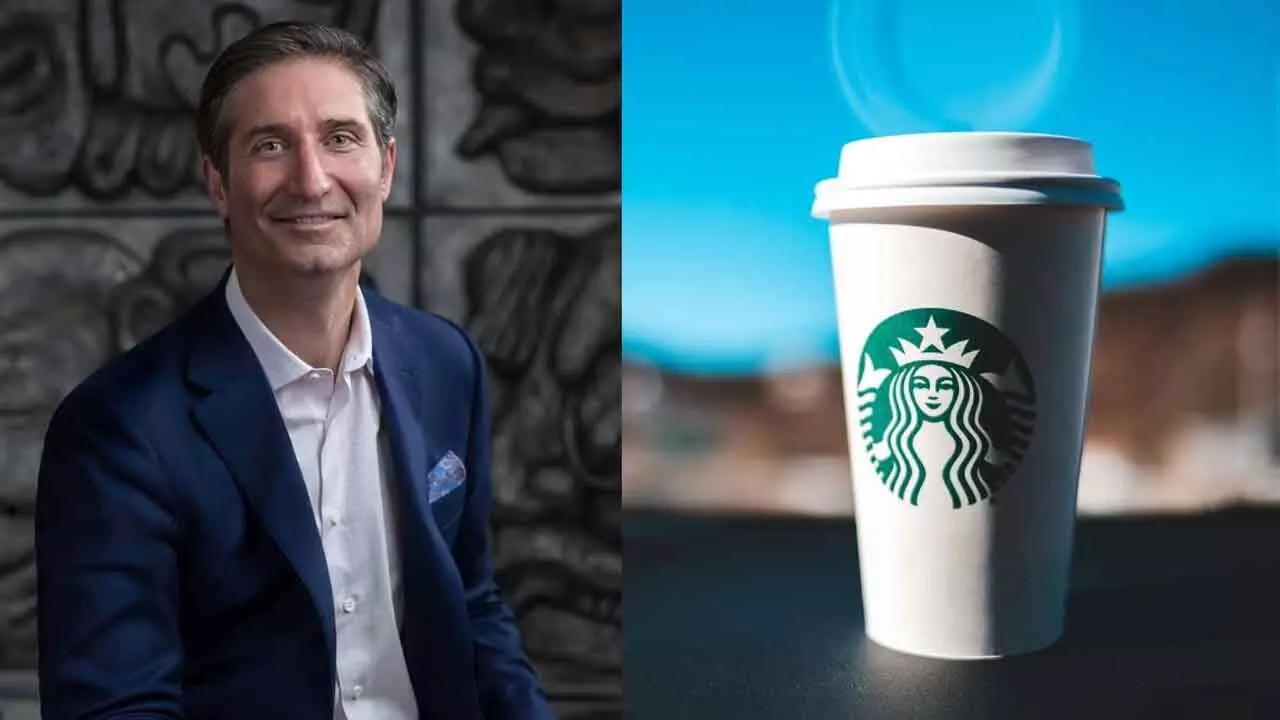Can New Celebrity CEO Niccol Steer Starbucks Back To Its Roots?
Niccol's track record of turning around struggling brands brings optimism, but his leadership will be tested in balancing growth, innovation, and the heart of Starbucks’ identity
Can New Celebrity CEO Niccol Steer Starbucks Back To Its Roots?

To Howard Schultz, the chaos he observed at a Starbucks in Chicago one recent morning summed up the troubles of the company he long led as chairman and CEO.
Commuters tumbled off trains and into a Starbucks store to pick up the orders they had placed on their cellphones. Drinks weren't ready when the mobile app said they would be. Customers couldn't tell which beverage was theirs.
“Everyone shows up and all of a sudden we've got a mosh pit,” Schultz said during a June episode of the podcast “Acquired.” “That's not Starbucks.” Fifty-three years after its founding, the Seattle coffee giant is unhappy with what it's become – and trying to figure out how to meet customers' changing needs without losing its coffeehouse roots. To recapture what once made it special — and turn around sagging sales — Starbucks is turning to Brian Niccol, an experienced marketer who previously led Taco Bell and Chipotle. Niccol took over as Starbucks' chairman and chief executive on Monday.
With nearly 40,000 stores around the world, Starbucks feels like it's on nearly every corner, but its premium prices are a turnoff to many customers who just want a quick jolt of caffeine, analysts say. At a Manhattan Starbucks, a medium Pumpkin Spice Latte is now almost $8. Even convenience stores like Wawa now offer great coffee, noted Chris Kayes, a professor of management at The George Washington University. Consumers who want a higher-end coffee experience, meanwhile, are seeking out independent cafes or upscale chains like Blue Bottle. “From a marketing perspective, Starbucks has really lost its way,” Kayes said.
Kayes called Niccol a highly regarded “celebrity CEO” who has proven he can turn around a struggling company. When Niccol arrived at Chipotle in 2018, the Mexican chain was reeling from multiple food poisoning outbreaks. Five years later, its annual sales had nearly doubled. Since he was named Starbucks' incoming CEO on Aug 13, Niccol has been visiting US stores, listening to baristas and observing the challenges the brand is facing, Starbucks said. “We look forward to the fresh ideas that Brian will bring to our business," the company said in a statement.
Streamlining Starbucks' menu is key to eliminating the kind of disarray Schultz reported seeing in Chicago, said Phil Kafarakis, president and CEO of the International Foodservice Manufacturers' Association trade group. Niccol needs to figure out who Starbucks' core customers are, what they like to drink and then start trimming the excess, Kafarakis said.
Because of the many ways patrons can customise their drinks, Starbucks baristas are tasked with making around 100,000 different variations on a consistent basis, Schultz said in the June podcast. Drinks are iced, blended, foamed, shaken and flavoured. Starbucks lists 11 different kinds of creamers and milks on its US website. “They really have created innovation. They have been very progressive. But the problem is, it's gotten complicated,” Kafarakis said. “Some poor human being has to make all those.”
New drinks can also muddy Starbucks' messaging. Six years ago, the company announced an environmental milestone: it would eliminate single-use plastic straws globally by 2020. But this summer, single-use plastic straws were back, tucked into Starbucks' new cold boba drinks. Starbucks said the new straws are made of compostable plastic. But the Ocean Conservancy, which once praised Starbucks as a “shining example” for eliminating single-use straws, said many composting systems aren't equipped to manage compostable plastics. Companies should move away from disposables altogether, the conservancy said.
Even as the beverages have gotten more complex — down to the number of flavour pumps each customer prefers or the amount of caramel drizzle they want on their Frappuccino — baristas have come under pressure to make them more quickly. Almost 75% of Starbucks' orders now come through Starbucks' mobile app, drive-thru windows or delivery partners like DoorDash. Fewer customers linger in stores.
Michelle Eisen, a Starbucks barista and union organizer, said her Buffalo, New York, store no longer has the chill coffeehouse vibe it had when she started in 2010. Eisen said Starbucks recently added new brewing machines and workstations to help baristas prepare drinks, but the number of workers has remained stagnant or fallen at many stores. “They're adding channels but not adding the bodies they need to keep up with that,” she said.
“Orders are coming in and there simply isn't the manpower to produce them.” As a result, Starbucks has fallen behind some rivals in service delivery times. In a recent US survey, the restaurant consulting firm Technomic found that 77% of customers at Caribou Coffee reported getting their order in five minutes or less. At Starbucks, that number was 62%. At Chipotle, Niccol streamlined store operations to shorten wait times, beefed up marketing and lured customers back with limited-time menu items.
Remaking Starbucks could be much more difficult. It has many more stores and varying challenges around the world, including low-cost competitors in China and ongoing boycotts in the Middle East. But Starbucks' board clearly thinks Niccol has the expertise to chart a new course. Under his generous contract, Niccol could make well in excess of $100 million in his first year at Starbucks.


